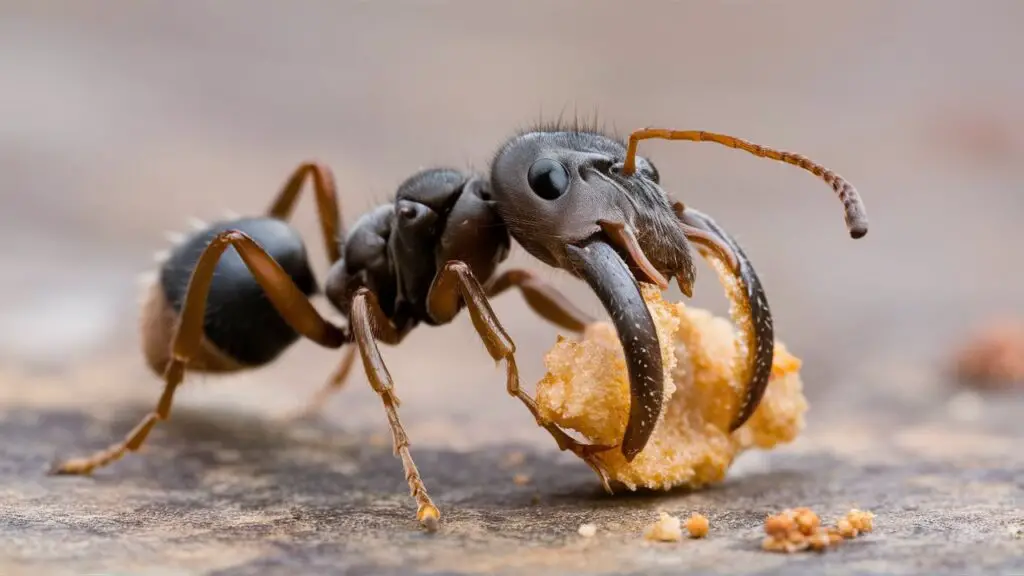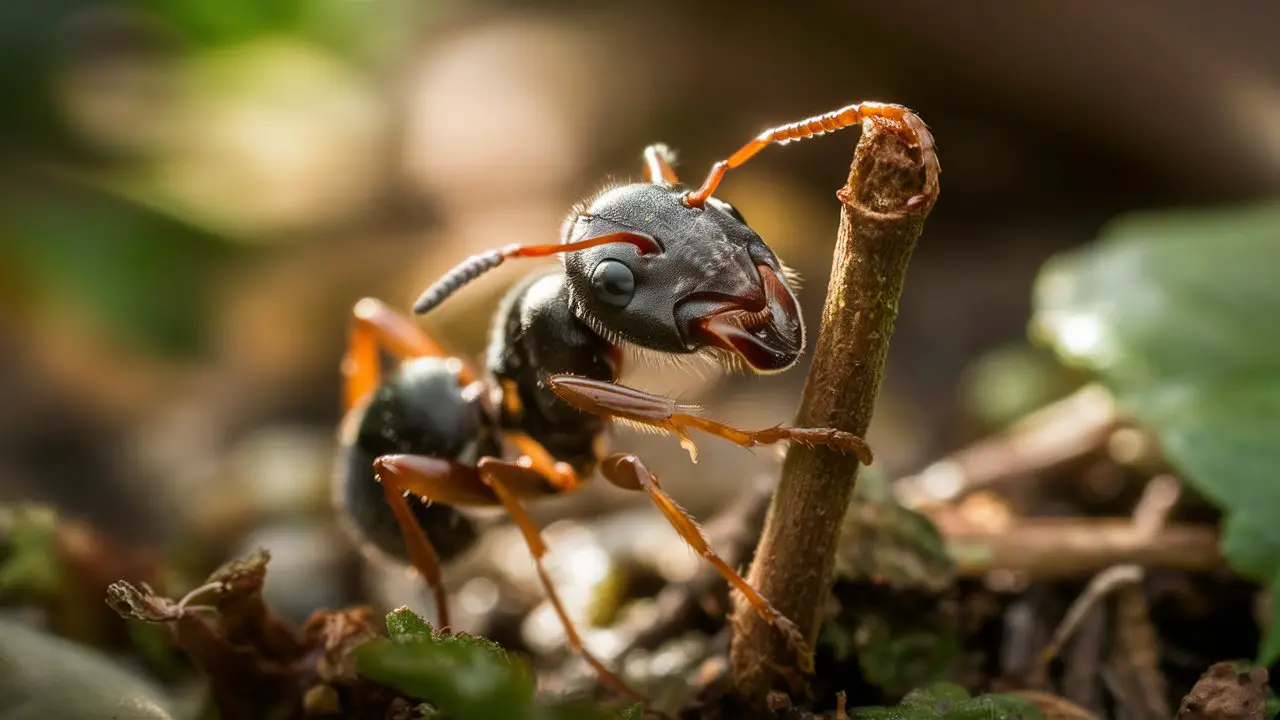As a homeowner, you know the importance of protecting your property from pests that can cause structural damage. Carpenter ants are one such pest that can be a nuisance. If you notice these large ants around your home, they may have established nests in wood. It is crucial that you identify infestations early and take the proper steps to control them before major damage occurs. In this article, you will learn how to identify carpenter ants, inspect your home for nests, and implement both non-chemical and chemical treatment methods. Following the guidance provided, you can take control of carpenter ant infestations and protect your home from further destruction. With vigilance and the right techniques, you can keep these pests at bay.
Identifying Carpenter Ants
Carpenter ants are large, black or reddish ants that nest in wood. They are commonly found in homes across North America. To determine if carpenter ants are active in your home, check for the following signs:
Sawdust-like Wood Shavings
Look for small, pellet-shaped wood shavings around baseboards, cabinets, and doors leading to the attic or crawlspace. Carpenter ants excavate wood to create their nests, and the shavings are expelled from the nest. The shavings will be light-colored if the infestation is active.
Wood Damage
Inspect wood structures, supports, and trimming for visible damage like tunnels or holes. The damage may be accompanied by a hollow sound when the wood is tapped. Wood damaged by carpenter ants will show signs of excavation, not surface chewing like that of termites.
Worker Ants
Adult carpenter ants are large, from 1/4 to 1/2 inch long. They are most active at night, so you may spot them in the evening around doorways or windows. The ants you see are sterile worker ants searching for food or water. If spotted indoors, the nest is likely located within the building.
Reproductive Ants
Winged reproductive ants, known as alates, may emerge from an indoor nest around spring to mate and establish new colonies. The alates are also large, from 3/8 to 1/2 inch long, and are poor flyers. Seeing alates indoors is a sure sign that a nest is located within the structure.
By identifying these signs of an infestation, you can determine appropriate steps to eliminate access points, destroy nests, and protect your home from further damage. Consulting an expert exterminator may be required for severe cases. With prompt action, these unwelcome guests can be evicted and your home restored.
Where Carpenter Ants Build Their Nests
Carpenter ants excavate wood to build their nests, preferring damp, decaying wood. They tunnel into areas of homes such as attics, crawl spaces, basements, porches, decks, and window and door frames. To identify possible nesting sites, inspect areas where wood comes into direct contact with soil, especially wood that shows signs of water damage or dampness.
Attics and Crawl Spaces
Attics and crawl spaces offer Carpenter ants secluded areas that are often damp, making them ideal locations for nest building. They favor spots where the wood has been damaged by water, like around air vents, plumbing fixtures, and the edges of the foundation. Regularly inspecting attics and crawl spaces and correcting moisture issues can help eliminate nesting sites.
Basements
Basements provide shelter and access to moisture, attracting Carpenter ants to build nests in wood structures like sills, joists, and beams. Look for frass, a mixture of wood shavings and insect excrement, beneath areas where wood meets the foundation. Repairing cracks in foundations and eliminating access to standing water helps remove basement nesting spots.
Porches, Decks and Exterior Wood
Carpenter ants frequently build nests in porches, decks, railings, and wood siding since these areas provide easy access to shelter and moisture. Inspect wood for visible damage and tunnels, especially where it contacts the soil. Painting or sealing exposed wood can protect it from moisture damage and nesting. Correcting drainage issues and removing wood debris in contact with the soil also helps eliminate nesting spots.
By locating and eliminating access to preferred nesting areas in and around homes, the habitat for Carpenter ants can be reduced and controlled. Regular inspections and repairs are the most effective way to identify nest locations before infestations become severe.
Signs of a Carpenter Ant Infestation
###Sawdust and Wood Shavings One of the first signs of carpenter ant activity is small piles of sawdust or wood shavings beneath wood structures or around the home. Carpenter ants excavate wood to build their nests, ejecting the chewed wood fragments outside of their galleries. Sawdust may be of different colors, depending on the type of wood the ants are infesting.
Wood Damage
Carpenter ants do not eat wood but excavate and damage it to build their nests. You may notice visible damage, such as wood that is hollowed out or contains tunnels. Wood may also show signs of weakening or water damage. The damage usually starts from the inside out, so the exterior surface may appear normal at first.
Ants Inside or Around the Home
The presence of large black ants, about 1/4 to 3/4 inches in length, inside or around the home is a sign of carpenter ant activity. You may spot the ants in the evening when they forage for food or see them crawling on wood surfaces. The ants you see are usually the minor workers – the major workers remain inside the nest.
Moisture or Water Damage
Carpenter ants are attracted to moisture-damaged wood. Look for any sources of moisture or water damage in the area where you see signs of the ants. Leaks, humidity, or condensation can saturate wood and make it more susceptible to infestation. Eliminating moisture sources can help make the area less conducive for carpenter ant nesting.
In summary, the primary signs of a carpenter ant infestation include: presence of frass, visible wood damage with smooth tunnels, moisture problems, and sightings of large black ants near wood. If you notice any of these indicators in or around your home, it is best to contact a pest management professional to inspect for carpenter ant activity and help eliminate the infestation before major damage occurs.

Effective Ways to Get Rid of Carpenter Ants
Identification
To eliminate carpenter ants, you must first properly identify them. Carpenter ants are large, reddish-black ants that tunnel into wood to build their nests. They do not eat the wood but simply tunnel through it. Look for quarter-inch wide ants, especially near areas of moisture or wood damage in the home. The presence of wood shavings or sawdust around openings in woodwork is a key sign of infestation.
Locate the Nest
Finding the nest is essential to controlling an infestation. Look for areas where you see multiple ants entering or exiting, especially around woodwork like baseboards, window and door frames, and the attic. The nest will likely be located in a wood member like a wall stud, rafter or joist. You may need to do some exploratory drilling or probing to pinpoint the nest location. Exercise caution to avoid structural damage.
Eliminate Access Points
Seal any cracks or crevices in foundations, siding, windows, roofs, and woodwork to eliminate access points into the home. Caulk, weatherstripping, door sweeps or repairing damage can help block entryways. This will force the ants to exit from the locations you have identified as nest entrances so you can treat those areas directly.
Apply Pesticides
Once you have located nest entrances, you can apply residual pesticides to kill the ants and eliminate the colony. Liquid or gel bait pesticides containing borates work well as the ants carry the chemical back to the nest. Spray pesticides containing bifenthrin or permethrin can also be applied around nest entrances and pathways. It may take repeated treatments to fully eliminate a nest. In severe infestations, professional pest control may be needed to eliminate all nesting sites and treat the structure.
Prevention
To prevent future infestations, eliminate wood contact with soil, improve ventilation and drainage around the foundation, and seal potential entry points. Wood treatment or replacement may also be required for heavily damaged areas. Perform regular inspections for signs of new activity and nests so you can treat infestations early before they become severe.
FAQs on Camponotus Ants: Your Carpenter Ant Questions Answered
What are carpenter ants?
Carpenter ants are large, black ants belonging to the genus Camponotus. They are commonly found in the United States and Canada. Carpenter ants get their name from their habit of tunneling into wood to build nests. They do not actually eat the wood; they excavate it to create galleries and chambers for their colony.
Why are carpenter ants damaging to homes?
While carpenter ants themselves do not consume wood, their nest building activities weaken the structural integrity of wood. They prefer wood that is moist or has been damaged by water, fungi, or other insects. In homes, they are commonly found nesting in wood siding, decks, porches, roofs, attics, basements, and crawl spaces. Their tunneling and chamber construction can cause wood to become brittle and collapse. It is important to eliminate carpenter ant infestations to prevent costly damage.
How can I get rid of carpenter ants?
There are several methods for controlling carpenter ant populations. The most effective approach is to locate the nest and eliminate it. This can be done through non-toxic or minimally toxic methods such as applying boric acid powder in cracks and crevices or injecting diatomaceous earth into wall voids. As a last resort, residual insecticides may be applied around the foundation of the structure. It is also important to eliminate access to moisture sources and wood that is in contact with the ground.
How can I prevent carpenter ants?
The key to preventing carpenter ant infestation is practicing good home maintenance and sanitation. Eliminate wood-to-ground contact by clearing mulch, brush, and wood debris away from the foundation of your home. Repair or replace damaged wood, especially areas with excess moisture like roofs, gutters, decks, and porches. Ventilate and insulate areas like attics, basements and crawl spaces. Store wood, especially firewood, off the ground and covered. Reducing access to food sources and shelter will make your home less habitable for carpenter ants and other pests.
In summary, carpenter ants can be destructive to homes, but with diligent prevention and control measures, populations can be managed and damage can be avoided. By understanding carpenter ant behavior and biology, you can safeguard your home from these industrious insects.
Conclusion
In summary, carpenter ants can cause significant structural damage if left unchecked in your home. Being able to identify them and understanding their behavior is key to implementing an effective control strategy. With vigilance, preventative measures, and prompt treatment, you can protect your home from an infestation. Keep a watchful eye out for signs of carpenter ants, address any moisture issues that may attract them, and utilize baits, dusts, or sprays if they invade. A proactive pest management approach will help ensure carpenter ants do not undermine the integrity of your home. Taking the time to learn their habits and biology will empower you to take control if carpenter ants become a nuisance on your property.
Don’t Miss a Thing! Enhance Your Wildlife Photography with Ultra-X Night Vision Goggles.
GET NOW!






